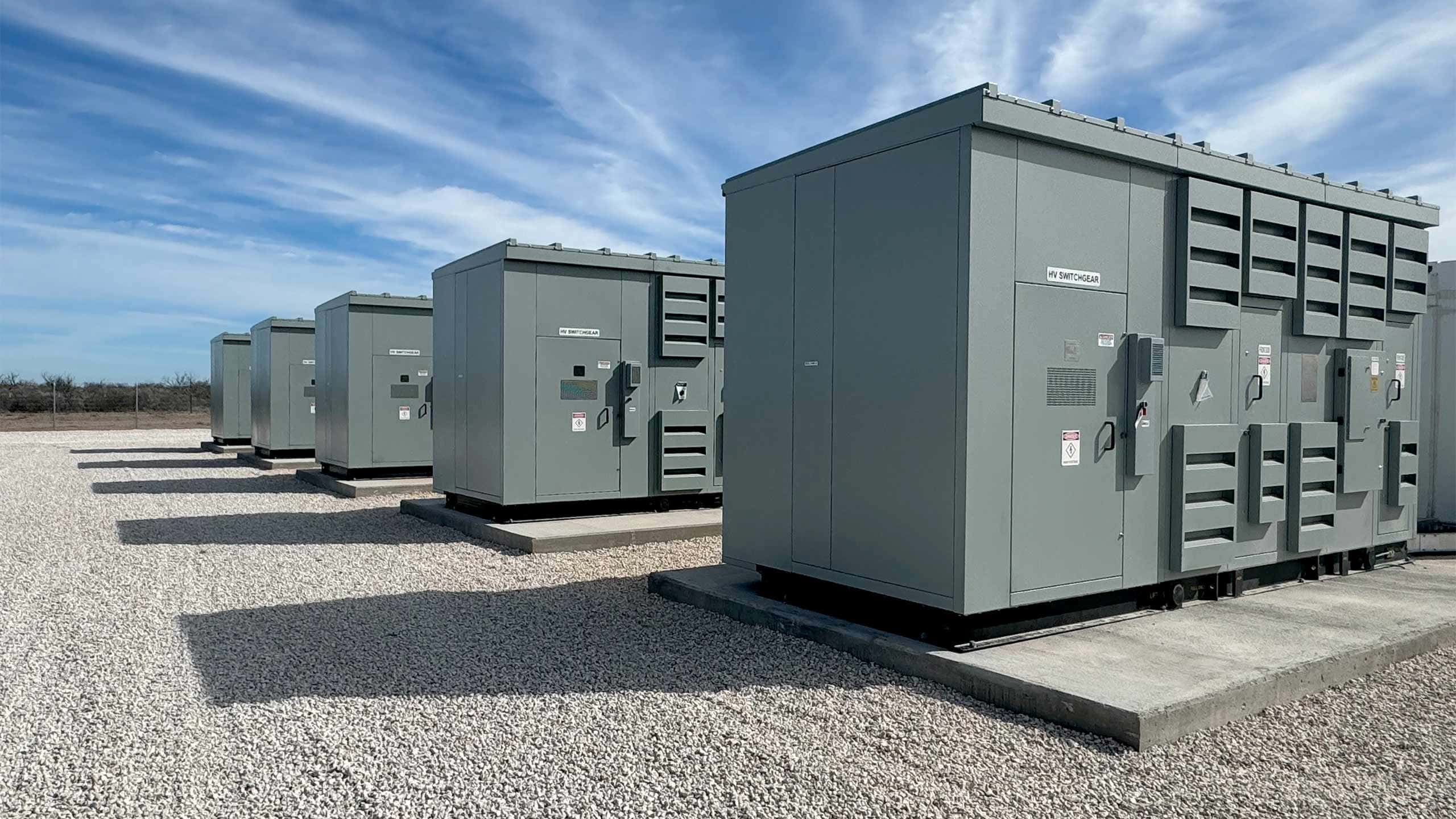
North Valleys Energy Storage
A 100 MW stand-alone battery energy storage facility with the potential to discharge power for a full four hours at capacity
North Valleys Energy Storage would contribute to grid stability while providing millions in property tax revenue that would benefit local schools, roads, emergency services, and more.
Introducing North Valleys Storage
North Valleys Storage is located within unincorporated Washoe County within the City of Reno’s sphere of influence. It is located on an undeveloped parcel off of North Red Rock Road about 6 miles north of Highway 395. The project is a 100 MW, 4-hour battery system, meaning that the system could provide energy at its full capacity for a full four hours.
Battery projects such as North Valleys Storage are highly valuable for the additional stability they provide to the grid, particularly during hot summer months. In addition to grid benefits, the project would also provide approximately $9 million in state and local taxes over the life of the project.
North Valleys Storage is still in the early stages of development. Environmental assessment and diligence are underway, and the permit application is expected to be submitted with the City of Reno by April 2025. The project is scheduled to begin construction in 2027 and would be placed in service toward the end of 2029.
Virtual Town Hall Meeting
April 10, 2025
5:30-7PM
Cypress Creek invites you to join us for a virtual Town Hall for the proposed North Valleys Storage, an energy storage project located off North Red Rock Road about 6 miles north of Highway 395. North Valleys Storage would provide energy at its full capacity for four full hours, helping contribute to a reliable and stable energy supply in Nevada.
Representatives from Cypress Creek and third-party experts will be available at the virtual Town Hall to provide information on the project and address questions from attendees.
No need to RSVP.
Frequently Asked Questions
What is battery energy storage and how does it work?
Much like a cell phone or laptop battery delivers power when other sources are unavailable, battery energy storage systems harness the same type of technology but on a greater scale. Rows of small lithium-ion batteries are placed into larger modules which are then stacked inside larger container units and connected to the existing electric grid. Once operational, the battery energy storage system charges during times of energy abundance, stores power, and then releases it back into the electric grid during times of high demand, helping to ensure that power is available when it is needed most.
Why do we need battery energy storage?
Battery energy storage systems are crucial for managing energy by storing it for use during high-demand periods, which is especially valuable when renewable sources like wind and solar are not generating electricity. These systems significantly enhance the stability and reliability of the electric grid.
What do battery energy storage systems look like?
Battery energy storage systems resemble shipping containers. These systems, composed of multiple batteries, often feature vegetative screening, using plants, trees, or shrubs to blend into the surrounding landscape and minimize visual impact.
Do battery energy storage systems make noise?
The batteries themselves are quiet, but some auxiliary equipment may produce noise comparable to that of a large home’s air conditioner. All battery energy storage sites are regulated to comply with local noise ordinances, and landscaping or setbacks (the distance between the equipment and other areas of importance) are often used to minimize any potential visual and sound impact.
What are the benefits of battery energy storage?
Battery energy storage systems play a vital role in providing reliability and resilience during power outages, keeping electric rates low for consumers, and ensuring environmental sustainability.
During power outages and emergencies, battery energy storage systems can provide crucial backup power. This ensures essential services remain operational and mitigates the effects of grid disruptions. They are particularly valuable in areas prone to natural disasters or in remote locations where maintaining a reliable power supply is critical.
Battery energy storage systems can also be used to offset the need for traditional and costly investments in grid infrastructure. Utilities can use battery energy storage to increase capacity for new, clean energy deployment, allowing more customers to realize the financial benefits of cheap power. Battery storage allows clean energy to be stored and used around the clock, reducing reliance on fossil fuels and other resources with emissions that can impact air quality.
Are battery energy storage systems safe?
Battery energy storage systems adhere to strict federal, state, and local safety standards, and incidents are extremely rare. Our developers work closely with local fire departments and first responders to ensure they have the necessary training and equipment to manage any potential incidents. Additionally, these systems do not produce air or water pollution, offering significant benefits to the electric grid while protecting the environment, health, and safety of nearby communities.
What fire safety protocols are in place for battery energy storage systems?
To minimize fire risks, each system is equipped with automatic fire suppression equipment and dedicated cooling systems to maintain ideal operating temperatures. Developers also collaborate with local fire departments and emergency responders to provide the necessary training and equipment to address any potential safety issues.
How are battery energy storage systems maintained?
Battery energy storage systems require minimal maintenance as they have no moving parts. They are equipped with advanced safety technology and are monitored remotely around the clock. Each battery system includes alerts for any operational deviations, enabling a prompt intervention to address potential issues. Periodic on-site maintenance involves routine testing to ensure all equipment operates safely and efficiently.
What happens at the end of a battery energy storage facility’s life?
Battery energy storage facilities usually operate for 20-30 years, though this can be extended by upgrading equipment. At the end of their useful life, all associated equipment and materials are removed, and the land is restored.
The North Valleys Team
Sohini Hathiramani
Developer

Lauren Altick
Manager of External Affairs, West

Get in touch today
Talk to Us
Looking to connect with a member of our team? Please contact us using the form below.